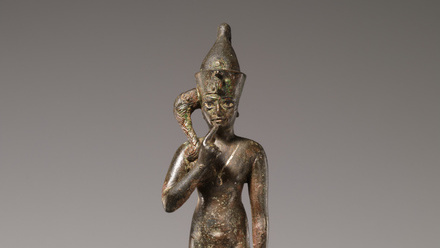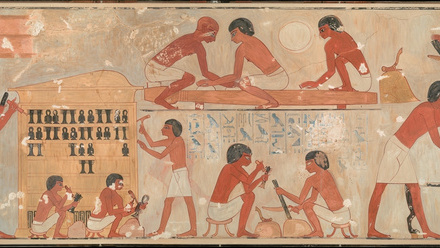Gods and mortals... and a bus to the afterlife!
While Ridley Scott delivered his epic on ancient Egypt over the festive season, we’d already made waves in the field of Egyptian religion back on Saturday 29th November 2014. Together with Birmingham Egyptology we ran our first study day in the green surroundings of the University of Birmingham’s Edgabston Campus, welcoming four experts on ancient Egyptian religion to present on the topic of ‘Gods and Mortals: the function of religion in Ancient Egypt.’
We were delighted to welcome Professor Susanne Bickel, senior lecturer at the University of Basel and director of its Kings’ Valley mission (new discoveries of which were published in Egyptian Archaeology 45). Her presentation focused on the key aspects of daily temple practise and the rituals of connecting to the divine. Prof. Bickel’s research drew from depictions on the walls of the Temple of Seti I at Abydos, recorded by the Society’s epigraphic mission led by Amice Calverley, and contemporary textual evidence from the Nineteenth Dynasty. This introduction to the topic of the day culminated in the God’s presence within the divine statue of the temple and the beginning of direct contact between the realms of sacred and profane.
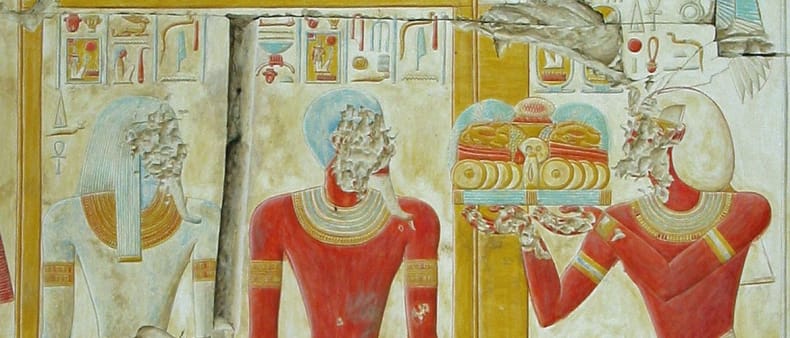 Seti I makes offerings to the gods in his temple at Abydos
Seti I makes offerings to the gods in his temple at Abydos
Dr Michela Luiselli, the second of the ‘Basel ladies’ as they become known on the day, is arguably the foremost scholar researching personal contact with the divine and delighted delegates with her current work on the cult of the goddess Mut at Karnak. Introducing the audience to the goddess’ alternating iconography between the benign wife of Amun and the ferocious lioness Sekhmet prompted one onlooker to equate Mut with the modern Beyonce/Sasha Fierce model! An analogy that will prove difficult to forget! Dr Luiselli’s research used textual evidence to reconstruct the developing personal practises of connecting with the goddess through rituals and hymns. Her work continues closely with the University of Basel and the current mission investigating the Mut precinct of Karnak led by Prof. Betsy Bryan of Johns Hopkins University Baltimore.
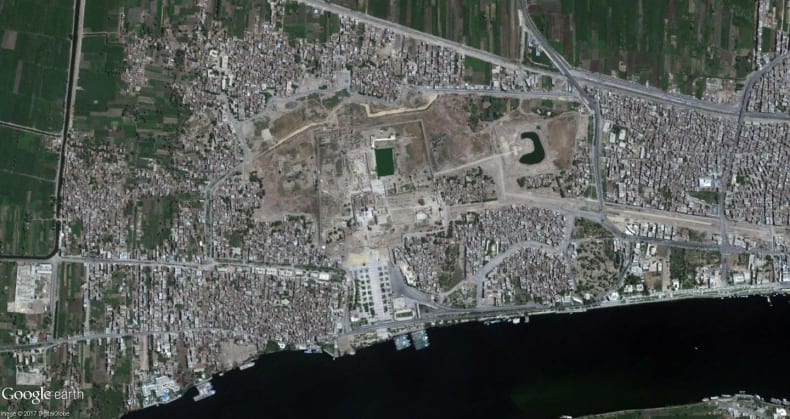 The temple of Karnak from Google Earth. The precinct of Mut can be seen to the right, clearly marked by the curved shape of its sacred lake – the Isheru.
The temple of Karnak from Google Earth. The precinct of Mut can be seen to the right, clearly marked by the curved shape of its sacred lake – the Isheru.
After a lunch break Birmingham’s two senior lecturers of Egyptology continued the pace set by the morning papers. Dr Tony Leahy discussed the role of intermediaries in the interaction between gods and mortals – but more specifically he introduced the individuals who became semi-divine in their own right; men such as the famous Imhotep and Amenhotep son of Hapu – names no doubt familiar to many in the audience. Dr Leahy focused on those examples which were less well known to the audience, exhibiting how the practise of communication through men who had become gods was not uncommon, and provided yet another element of religious communication in Ancient Egypt.
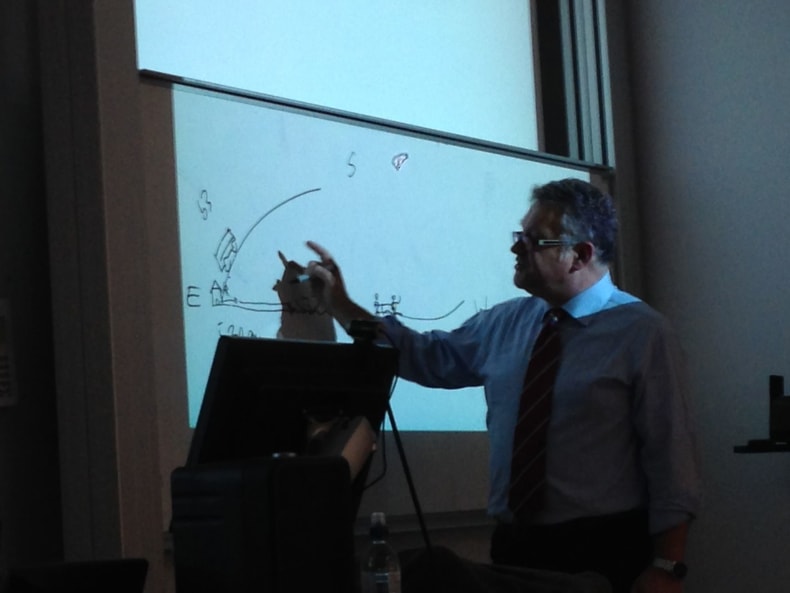 Dr Martin Bommas draws the bus journey to the afterlife
Dr Martin Bommas draws the bus journey to the afterlife
The study day was closed by Dr Martin Bommas, who kept the pace of the day with an aptly titled “He who comes too late is punished by death”. The importance of timekeeping during that final earthly journey of the deceased across the Nile floodplain and into the necropolis to join the gods of the underworld was presented. Dr Bommas explained that the journey should actually be viewed as two separate paths, one in which the spirit of the deceased must join a metaphorical ‘bus’ across the sky which left at sunrise, while the body and entourage should leave at the same time. These two components then reconvene at the tomb, ready for the final burial rites and arrival at the gods of the underworld.
With this timely and apt ending the day was over. We would like to thank all four speakers for their presentations and thought provoking discussions. We would also like to express our gratitude to Birmingham Egyptology and the University of Birmingham for inviting us to host this study day at their campus and for their help in the organisation and running of the event.
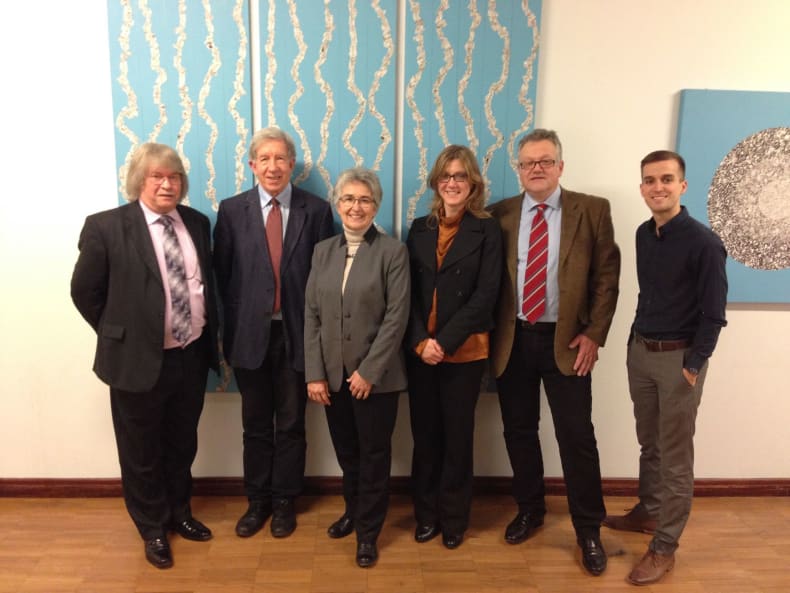 The speakers and organisers, from left to right: Mr Steven Gregory (Chair of Birmingham Egyptology), Dr Tony Leahy, Prof. Susanne Bickel, Dr Michela Luiselli, Dr Martin Bommas, Carl Graves (EES Education and Public Engagement Manager)
The speakers and organisers, from left to right: Mr Steven Gregory (Chair of Birmingham Egyptology), Dr Tony Leahy, Prof. Susanne Bickel, Dr Michela Luiselli, Dr Martin Bommas, Carl Graves (EES Education and Public Engagement Manager)

